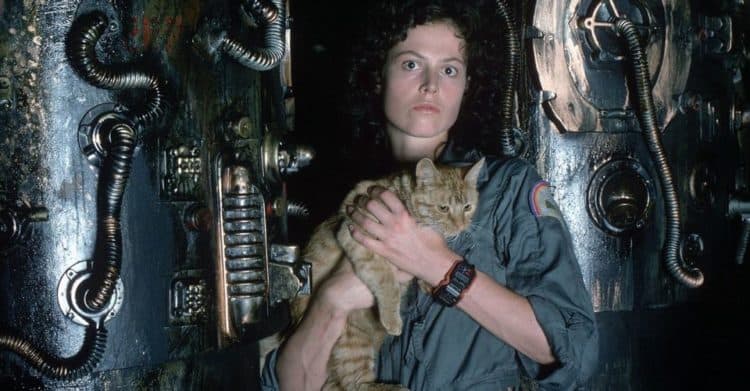
If you look at Ridley Scott’s movie Alien and It! The Terror From Beyond Space, you might see a few similarities that are hard to deny since the manner in which the story is pushed forward is hard to deny. The crew of each movie taking an alien on board without knowing about it is very similar, so perhaps Scott was keen on the 50s movie and tried to think up a few differences while keeping the basic structure of the story. If that’s the case then he certainly came up with a way to incorporate the work of H.R. Giger, the creator of the xenomorph’s design, in a very inventive and disturbing manner. Where Terror had the crew of the ship take on a survivor of the creature’s attacks as a prisoner, thinking that he’d been responsible for the deaths of his companions, they also allowed the alien inside without knowing it. As one can guess the alien would eventually begin to stalk the crew and kill them off one by one. In a way, this almost sounds as though it could have influenced a part of Alien 3 as well since no one had any idea that a xenomorph had been birthed by the facehugger that had stowed away on Ripley’s evacuation vehicle. There is a particular scene in which one of the prisoners witnesses the death of two of his fellow inmates at the jaws and claws of the xenomorph. Later he’s found babbling about dragons and covered in blood, but of course, no one takes heed until the xenomorph actually shows itself and snags the warden in front of everyone.
But in terms of copying the 1950s movie entirely, it’s easy to see that both movies differ in a big way since the creatures are different, the feeling is different, and the overall story is different even if there are a number of similarities that can be attributed to quite a few sci-fi stories that have come and gone. This is one thing that people don’t appear to think about at times, the fact that a narrative, the bare bones of a story, will be repeated over and over, taken from different angles, given a different perspective, and twisted in one way or another to accommodate the vision of the creator. This is what’s been done here as well since if Scott did decide to take the idea from the 50s movie and work with it, he still came up with a very original idea that scared the living hell out of a lot of people. How many people still cringe when they think about the alien bursting from John Hurt’s chest and the fountain of blood that came with it? The fun fact about that is that the rest of the cast had no idea that the blast of crimson was going to be so forceful, and Lambert’s cry of shock and revulsion was pretty authentic. But the manner in which both aliens were allowed into their respective ships was very different, as was the idea that the crew of the Nostromo in Alien had to send out a party of three people to check out the creepy ship that had been sending the distress signal.
One might think that common sense has no place in a horror movie, and they’d be right since otherwise, we wouldn’t get much of a story. But anyone claiming that the stories are entirely the same needs to sit down and examine the facts a bit. If the stories were too alike that would be akin to plagiarism on a level that would be hard to push past, even for someone such as Ridley Scott, who’s been respected as a director for quite some time. But thankfully the narrative might be similar between the two movies, but that’s about where it ends since the details start to diverge pretty quickly, especially since the creature in Terror doesn’t gestate in a human host and the appearances are more than a little different thanks to the technology that was available in the 50s. Had both movies been made around the same time it’s easy to think that people might have picked up on the similarities a little sooner, but it’s also likely that things might have been altered just enough to keep people from making this comparison. One thing that can and should be said is that the movies that were created in the 50s can be seen as a useful and very necessary example for the directors that would come later to utilize since much of what was produced back in the 50s has been forgotten. Dispute that all you want, but it’s likely that most of what we revere today was a product of a director that watched one or more older movies and became inspired somehow.
 Follow Us
Follow Us





